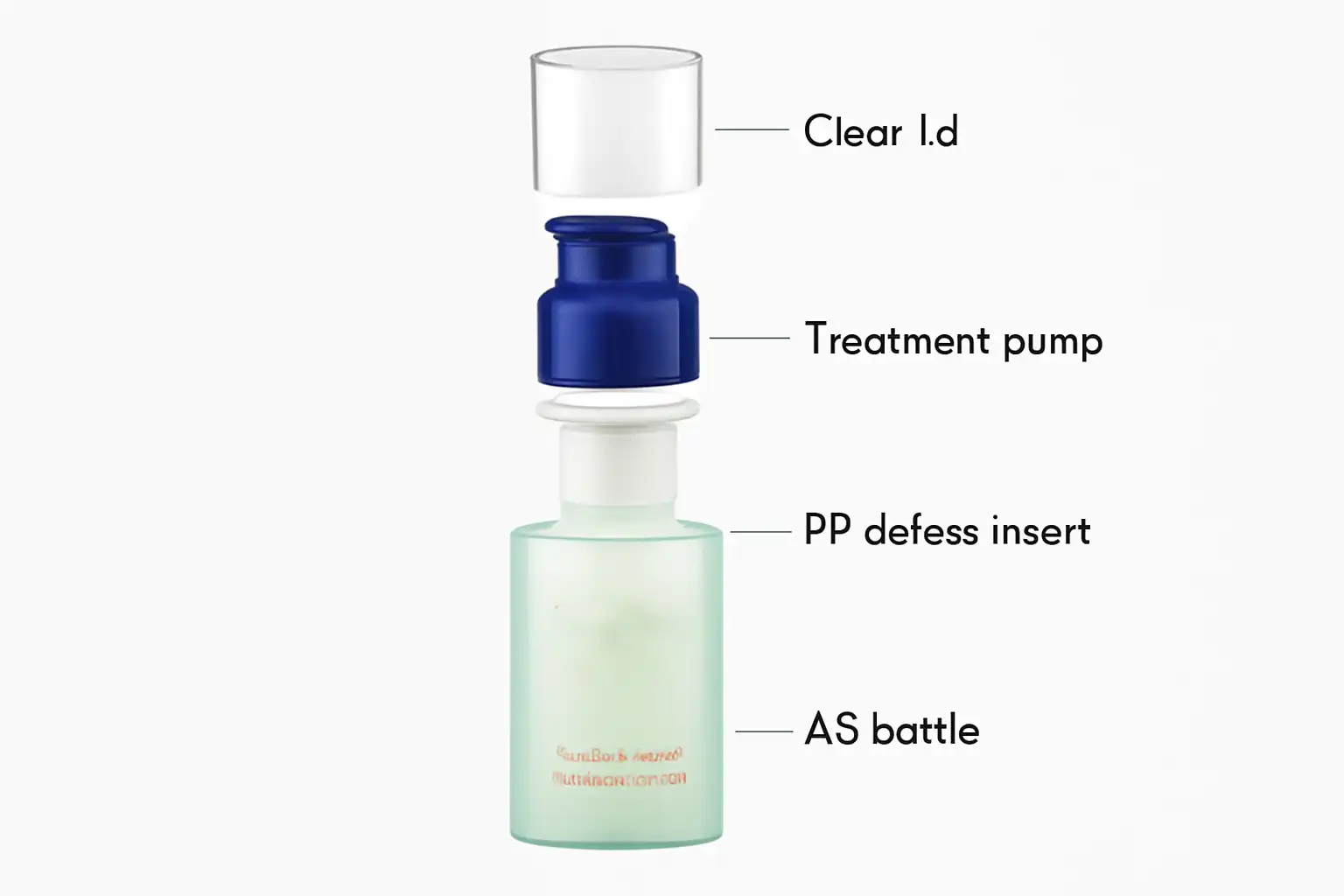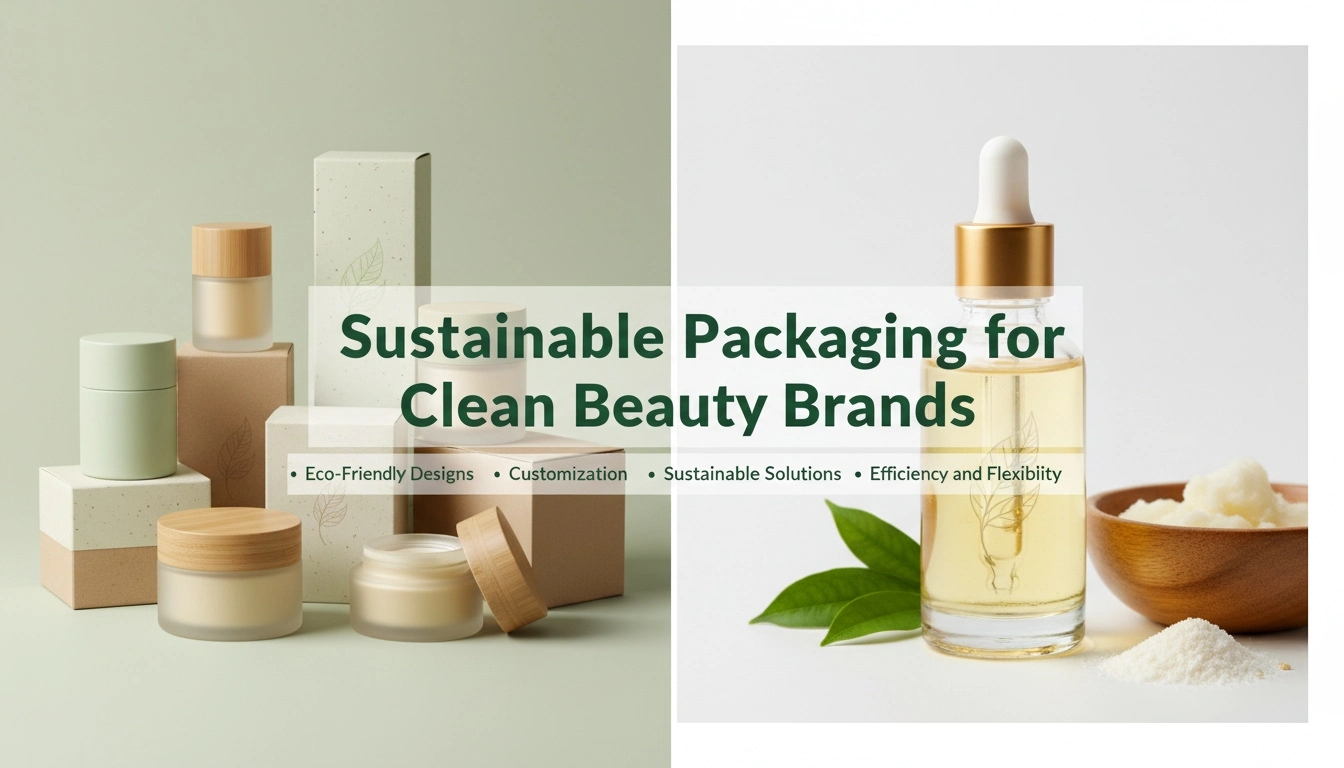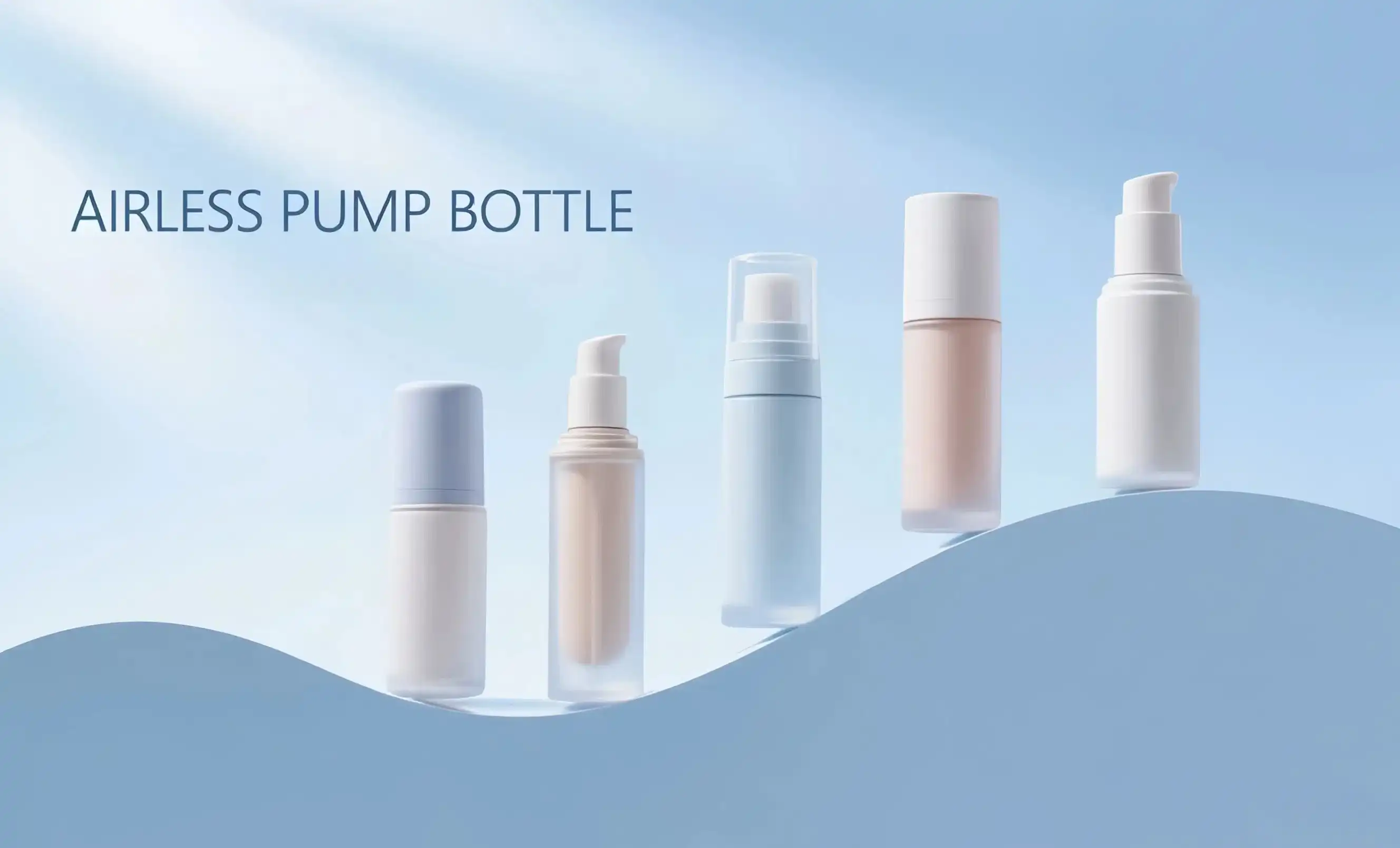Eco-friendly packaging may reduce product efficacy due to lower barriers. Traditional plastic wrapping shields delicate cosmetics from air, light, and moisture. Companies using sustainable materials must ensure their packaging provides equivalent protection. Eco-friendly packaging manufacturers with high-performance barriers have addressed this issue. Regulatory risk is another key problem. Because eco-friendly packaging involves new materials or technologies, organizations must undergo complex certification and fulfill international standards. This might delay product launches and increase costs. Package producers, beauty corporations, and regulatory authorities are working together to streamline these processes and set cosmetics packaging sustainability guidelines.

Do plant-based plastics compromise product protection?
The rise of plant-based plastics in eco-friendly packaging has raised questions about their ability to protect cosmetic products effectively. These bioplastics, derived from renewable resources such as corn or sugarcane, offer a promising alternative to traditional petroleum-based plastics. However, concerns persist about their barrier properties and long-term stability.
Advancements in Bioplastic Technology
Recent advancements in bioplastic technology have significantly improved the performance of plant-based packaging materials. Innovations in polymer blending and processing techniques have resulted in bioplastics with enhanced barrier properties, rivaling those of conventional plastics. For instance, some new plant-based materials exhibit excellent oxygen and moisture barrier properties, crucial for preserving the efficacy of skincare products and extending their shelf life.
Topfeelpack, a leader in sustainable packaging solutions, has been at the forefront of these advancements. Their research and development efforts have yielded plant-based packaging options that not only meet but sometimes exceed the protective capabilities of traditional plastics. These innovations demonstrate that with proper engineering, eco-friendly materials can indeed provide the necessary product protection without compromising on sustainability.
Customized Solutions for Different Product Types
It's important to note that the suitability of plant-based plastics can vary depending on the specific product requirements. For example, while a moisturizer might be well-protected in a bioplastic container, a volatile perfume might require additional barrier properties. This nuanced approach has led to the development of customized eco-friendly packaging solutions tailored to different cosmetic formulations.
By working closely with cosmetic brands, packaging manufacturers can create bespoke plant-based packaging that addresses the unique preservation needs of each product. This collaborative approach ensures that the transition to eco-friendly packaging doesn't come at the cost of product integrity or consumer satisfaction.
How to balance sustainability and functionality in beauty packaging
Achieving a balance between sustainability and functionality in beauty packaging is a complex challenge that requires a multifaceted approach. As consumers demand more environmentally friendly options, beauty brands must find ways to meet these expectations without compromising on product quality or user experience.
Material Innovation and Smart Design
One key strategy in balancing sustainability and functionality is through material innovation coupled with smart design. This involves not just replacing traditional materials with eco-friendly alternatives, but also rethinking the entire packaging structure to optimize both sustainability and performance.
For instance, some brands are experimenting with hybrid packaging solutions that combine recyclable or biodegradable materials with small amounts of conventional plastics where necessary for functionality. This approach allows for a significant reduction in environmental impact while maintaining the necessary protective properties.
Additionally, innovative design techniques can enhance the functionality of eco-friendly materials. For example, multilayer structures using thin layers of different sustainable materials can provide the barrier properties needed for sensitive formulations while still being recyclable or compostable.
Focusing on Reusability and Refillability
Another effective approach to balancing sustainability and functionality is by prioritizing reusability and refillability in packaging design. This strategy not only reduces waste but also allows for the use of more durable, high-quality materials that can provide excellent product protection over extended periods.
Many beauty brands are now offering refillable options for their products, from lipsticks to moisturizers. These systems typically involve a durable outer container made from materials like glass or recycled plastic, paired with recyclable or compostable refill cartridges. This approach satisfies both the need for eco-friendly packaging and the demand for high-performance product protection.
Topfeelpack's circular economy model for packaging waste reduction
Topfeelpack has emerged as a pioneer in implementing a circular economy model for packaging waste reduction in the beauty industry. This innovative approach not only addresses the environmental concerns associated with traditional packaging but also offers a sustainable solution that aligns with the principles of a circular economy.
Closed-Loop Recycling System
At the heart of Topfeelpack's circular economy model is a closed-loop recycling system. This system is designed to recapture and reuse materials from used packaging, significantly reducing the amount of waste that ends up in landfills or oceans. The process begins with the collection of used packaging from consumers through strategic partnerships with beauty retailers and dedicated recycling programs.
Once collected, the packaging undergoes a sophisticated sorting and cleaning process to prepare the materials for recycling. Topfeelpack employs advanced recycling technologies that can handle various types of plastics and other materials commonly used in beauty packaging. This includes the ability to separate and process multi-layer packaging, which has traditionally been challenging to recycle.
Integration of Recycled Materials in New Packaging
The recycled materials are then reintegrated into the production of new packaging. Topfeelpack has developed innovative techniques to ensure that these recycled materials meet the high standards required for beauty packaging, including maintaining the necessary barrier properties and aesthetic appeal.
By incorporating a significant percentage of recycled content in their new packaging, Topfeelpack not only reduces the demand for virgin materials but also closes the loop in the packaging lifecycle. This approach aligns perfectly with the principles of a circular economy, where resources are kept in use for as long as possible, extracting maximum value before recovery and regeneration at the end of each service life.
Collaboration with Beauty Brands
Topfeelpack's circular economy model extends beyond their own operations through strategic collaborations with beauty brands. By working closely with their clients, Topfeelpack helps brands design packaging that is not only eco-friendly but also optimized for recyclability and reuse within the circular system.
This collaborative approach includes educating brands about the benefits of circular economy principles and providing guidance on how to incorporate these principles into their packaging strategies. Topfeelpack offers consulting services to help brands transition to more sustainable packaging options without compromising on functionality or brand aesthetics.
Consumer Education and Engagement
Recognizing the crucial role of consumers in the success of any circular economy model, Topfeelpack places a strong emphasis on consumer education and engagement. They work with their brand partners to develop clear, informative labeling that guides consumers on proper disposal and recycling of packaging.
Additionally, Topfeelpack supports initiatives that incentivize consumers to return used packaging, such as reward programs or in-store collection points. By making it easy and rewarding for consumers to participate in the recycling process, Topfeelpack ensures a steady stream of materials for their closed-loop system while fostering a culture of sustainability among beauty consumers.
The circular economy model developed by Topfeelpack represents a significant step forward in addressing the environmental challenges posed by beauty packaging. By reimagining the entire lifecycle of packaging materials, from production to disposal and back again, Topfeelpack is setting a new standard for sustainability in the beauty industry.
Conclusion
The journey towards truly sustainable and functional eco-friendly packaging in the beauty industry is ongoing, but significant progress has been made. As we've explored, the risks associated with transitioning to more sustainable packaging solutions are being met with innovative responses from companies like Topfeelpack. From advancements in plant-based plastics to the implementation of circular economy models, the industry is finding ways to balance environmental responsibility with product integrity and consumer expectations.
For beauty brands looking to make the transition to more sustainable packaging options without compromising on quality or functionality, partnering with experienced manufacturers like Topfeelpack can provide invaluable support and expertise. With their advanced airless bottles designed to prevent air exposure and maintain product effectiveness, along with their commitment to sustainable materials and energy efficiency, Topfeelpack offers a comprehensive solution to the challenges of eco-friendly packaging in the beauty industry.
Are you a skincare brand, makeup brand, or cosmetics manufacturer looking to enhance your sustainability efforts while ensuring product protection? Topfeelpack's fast customization process, competitive pricing, and quick delivery times make them an ideal partner for brands of all sizes. Whether you're seeking to comply with environmental regulations, require custom packaging solutions, or need support with regulatory documentation, Topfeelpack has the expertise to meet your needs. To learn more about their innovative eco-friendly packaging solutions and how they can benefit your brand, reach out to their team at pack@topfeelgroup.com. Take the first step towards a more sustainable future for your beauty products today.
References
- Johnson, A. (2023). "Advancements in Eco-Friendly Packaging for the Cosmetics Industry". Journal of Sustainable Packaging, 15(2), 78-92.
- Smith, B., & Brown, C. (2022). "Balancing Sustainability and Functionality in Beauty Product Packaging". International Journal of Cosmetic Science, 44(3), 301-315.
- Green Packaging Alliance. (2023). "Annual Report on Sustainable Packaging Trends in the Beauty Industry".
- Lee, D., & Park, S. (2023). "Circular Economy Models in Cosmetic Packaging: A Case Study Approach". Sustainability in Business, 8(4), 412-428.
- World Packaging Organisation. (2022). "Global Status Report on Eco-Friendly Packaging Solutions".
- Thompson, E. (2023). "Consumer Perceptions and Behaviors Towards Sustainable Beauty Packaging". Journal of Consumer Research, 50(2), 189-205.

 - 副本_1745399213966.webp)

_1747827716538.webp)

